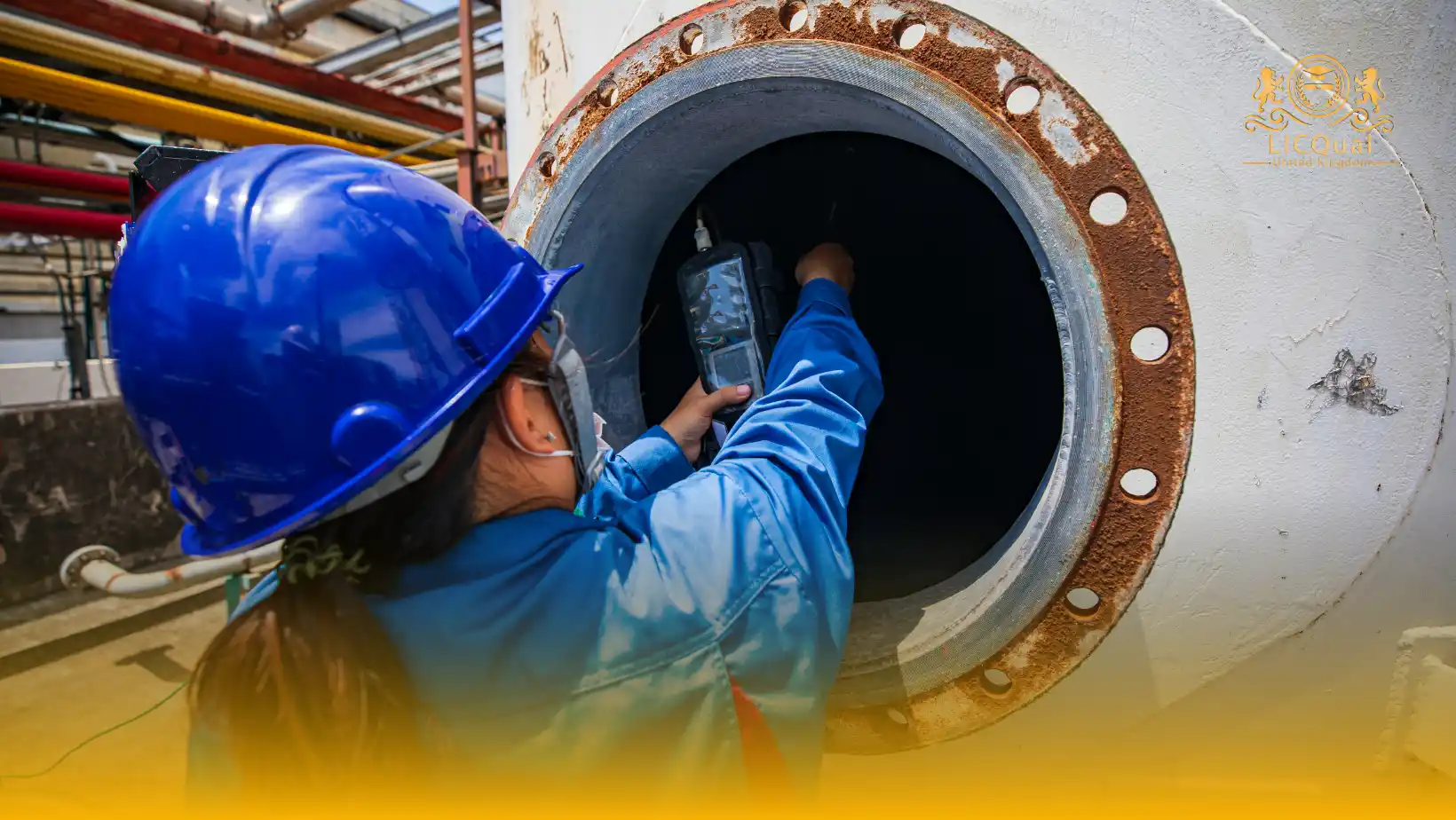In high-risk industrial environments, preparedness and knowledge can mean the difference between safety and disaster. The LICQual Level 2 Award in H2S Safety is a comprehensive training program designed for individuals who have a foundational understanding of Hydrogen Sulfide (H2S) and seek to deepen their knowledge and operational skills. This course equips participants with enhanced strategies for detecting, managing, and responding to H2S hazards, ensuring a higher standard of workplace safety and regulatory compliance.
H2S is an invisible, highly toxic gas commonly found in sectors like oil and gas, petrochemicals, wastewater treatment, and mining. The LICQual Level 2 Award in H2S Safety goes beyond the basics by exploring intermediate-level concepts such as gas detection technologies, risk assessment procedures, and advanced use of respiratory protective equipment. Learners will engage with real-world case studies, industry scenarios, and practical exercises to build competence and confidence in handling H2S-related risks.
This course is ideal for workers, supervisors, and safety personnel who play a critical role in maintaining a safe working environment. By completing the H2S Safety Level 2 Award, learners demonstrate a proactive approach to health and safety that can significantly reduce the chances of exposure incidents and promote a culture of safety within the organization. The course is structured over two days, consisting of six focused units aligned with international occupational safety standards.
Training is delivered in an interactive format, combining theoretical instruction with practical simulations. Participants will learn how to conduct risk assessments, operate detection equipment, implement emergency response plans, and ensure the correct use of personal protective equipment (PPE). Each unit is designed to be directly applicable to the workplace, allowing learners to translate knowledge into effective safety practices. The LICQual Level 2 Award in H2S Safety ensures that participants not only understand the risks but are also equipped to act swiftly and responsibly in critical situations.
Earning this qualification reflects a strong commitment to operational safety and opens pathways for career advancement in hazardous sectors. Whether you are aiming to meet job requirements, enhance your resume, or lead safety initiatives at your workplace, the LICQual Level 2 Award in H2S Safety provides the essential skills and recognition you need. With a balanced focus on knowledge and application, this course is a valuable investment in personal safety and professional growth.
Course Overview
Qualification Title
LICQual Level 2 Award in H2S Safety
Total Units
6
Total Credits
6
GLH
12
Qualification #
LICQ2200445
Qualification Specification
To enroll in the LICQual Level 2 Award in H2S Safety applicants must meet the following criteria:
|
Qualification# |
Unit Title |
Credits |
GLH |
|---|---|---|---|
|
LICQ2200445-1 |
Understanding H2S Risk Assessment |
1 |
2 |
|
LICQ2200445-2 |
Effects of H2S on Human Health and Environment |
1 |
2 |
|
LICQ2200445-3 |
Operation of Gas Detection Equipment |
1 |
2 |
|
LICQ2200445-4 |
Selection and Use of Respiratory Protective Equipment |
1 |
2 |
|
LICQ2200445-5 |
Rescue Techniques and Emergency Drills |
1 |
2 |
|
LICQ2200445-6 |
Roles and Responsibilities in H2S Safety Management |
1 |
2 |
By the end of this course,applicants will be able to:
1. Understanding H2S Risk Assessment
Identify and evaluate potential sources of H2S in various industrial settings.
Conduct structured H2S risk assessments to determine levels of exposure and necessary control measures.
Apply the hierarchy of control to mitigate identified H2S risks.
Document and review risk assessment findings in line with workplace safety protocols.
2. Effects of H2S on Human Health and Environment
Explain the toxicological impact of H2S on human health at varying concentration levels.
Describe the short-term and long-term health effects caused by H2S exposure.
Assess the environmental consequences of H2S release and contamination.
Promote health monitoring and environmental safety practices to reduce H2S risks.
3. Operation of Gas Detection Equipment
Identify different types of H2S gas detection devices and their appropriate applications.
Demonstrate correct usage and basic maintenance of portable and fixed gas detectors.
Interpret gas detector readings and understand threshold limits and alarm settings.
Respond effectively to gas detection alerts in accordance with organizational procedures.
4. Selection and Use of Respiratory Protective Equipment
Differentiate between various types of respiratory protective equipment (RPE) used in H2S environments.
Select appropriate RPE based on risk level, task duration, and working conditions.
Demonstrate correct fitting, use, and care of RPE in simulated scenarios.
Recognize the limitations of different RPE types and ensure regular inspection and replacement.
5. Rescue Techniques and Emergency Drills
Explain the principles of emergency response and safe rescue operations in H2S incidents.
Demonstrate effective use of escape and rescue equipment in practical exercises.
Participate in emergency drills simulating H2S release scenarios.
Evaluate emergency response performance and recommend improvements.
6. Roles and Responsibilities in H2S Safety Management
Define key roles in H2S safety management including supervisors, responders, and safety officers.
Understand the responsibilities of individuals and teams in implementing safety protocols.
Promote a culture of safety through communication, reporting, and continuous improvement.
Support compliance with workplace policies and legal requirements related to H2S safety.
This diploma is ideal for:
- Workers in oil and gas, petrochemical, mining, and wastewater industries
- Safety officers and supervisors responsible for managing hazardous gas risks
- Personnel who have completed Level 1 H2S Safety training and seek advanced knowledge
- Emergency response team members operating in H2S-prone environments
- Contractors and field technicians working in confined spaces or high-risk zones
- Health and safety trainees preparing for roles in industrial safety management
- Individuals aiming to meet industry regulations and enhance job qualifications in H2S safety
- Engineers and technical staff involved in maintenance and operational tasks near H2S sources
- Environmental and occupational health professionals seeking specialized H2S training
- Line managers and team leaders responsible for ensuring safety compliance on-site
- New hires in high-risk sectors requiring intermediate-level safety induction
- Risk assessors and auditors evaluating safety systems related to gas exposure
- Training coordinators and HR personnel looking to upskill their workforce in H2S safety
- Offshore platform workers and drilling crew members exposed to potential gas leaks
- Employees working in remote or enclosed areas with limited ventilation and gas monitoring systems
Assessment and Verification
All units within this qualification are subject to internal assessment by the approved centre and external verification by LICQual. The qualification follows a criterion-referenced assessment approach, ensuring that learners meet all specified learning outcomes.
To achieve a ‘Pass’ in any unit, learners must provide valid, sufficient, and authentic evidence demonstrating their attainment of all learning outcomes and compliance with the prescribed assessment criteria. The Assessor is responsible for evaluating the evidence and determining whether the learner has successfully met the required standards.
Assessors must maintain a clear and comprehensive audit trail, documenting the basis for their assessment decisions to ensure transparency, consistency, and compliance with quality assurance requirements.

